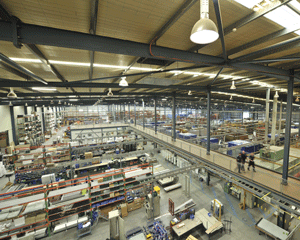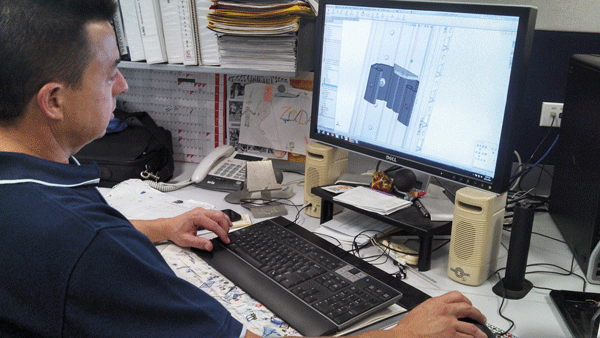Manufacturing industrial strength DAM/ERP integration

Thousands of products, tens of thousands of images, 3D, 2D and print assets and a need to keep everything synchronised between marketing, manufacturing and a central ERP platform. Sounds like a perfect storm for a digital asset management (DAM) solution, which was exactly the situation facing Australian industrial manufacturer B&R Enclosures.
The family owned company with over 400 staff keeps some of Australia's biggest mining, infrastructure, utilities and residential projects humming along by providing a critical piece of gear into any location - stainless steel and aluminium enclosures to house complex electrical and telecommunications equipment in demanding locations.
In 2013 Ian van Haeringen, Information Systems Manager, has been busy implementing a new ERP platform and associated Canto Cumulus digital asset management (DAM) solution to bring some order to the use of image and document assets across sales, marketing, design, engineering and manufacturing.
The company is using SharePoint to hold policies & procedures,for internal communications and also to drive a portal for external access by customers.
It acquired Cumulus 12 months ago and has been implementing the SYSPRO ERP system throughout 2013.
"Our sales team, when they take a call need to be able to see in the ERP system what they are selling, and our current 10-year old ERP system doesn't allow them to do that," said van Haeringen.
"What we do is not rocket science, we manufacture sheet metal enclosures for the electrical and telecommunications industries. How we seek to differentiate ourselves is on our ability to provide service and the ability to surface image assets in multiple locations in print, on the web, iPhone and iPad will help that enormously"
The product pipeline for B&R Enclosures begins with 3D design in the SolidWorks CAD application, then moves through manufacturing and assembly to marketing, where tens of thousands of individual parts must be catalogued and referenced to stock codes in the company's ERP suite.
The 3D models created in SolidWorks during product design are used as the source of assembly information and work instructions which are stored in a SolidWorks product data management solution called Vault.

Product design bergins n the SolidWorks CAD application.
Data is extracted from here for manufacturing works orders and information used on the manufacturing shop floor. Composer is a tool used to "explode" the 3D model and present it in the way that the manufacturer wants it to be seen, after which it is exported to Microsoft Publisher.
The marketing challenge involves taking photos of thousands of products and presenting images that can be utilised for brochures, web pages, etc.
Previously the images used for catalogues and the Web site were stored on disc or in network folders in a wide range of image and document formats.
The difficulties of that approach are obvious. Who is to know whether the latest image or product sheet is available. Who's to know whether the latest quote they have provided to a customer is based on the latest data.
By integrating the Cumulus DAM system with the SYSPRO ERP platform, a new synchronised workflow is being established for marketing and communications.
It has also enabled the development of a new iOS application for field sales staff called iRep which aims to provide simplified access to current pricing and product information from the SYSPRO database. Furthermore, it allows a PDF order to be generated and emailed from a sales representative in the field with attached assembly instructions.
The integration pulls information across into Cumulus as well as making a thumbnail/preview of the image from Cumulus available in the SYSPRO ERP.
An overnight Roboflow process runs to accumulate all the content and populate the production catalogues via Canto Roboflow, an add-on product that enhances Canto Cumulus with “watch folder” auto-cataloging and catalog synchronisation, scriptable asset and metadata processing.
This flushing of production content and rebuilding overnight ensures that all the information is correct as of the beginning of the day and there is no old content that has fallen out of usage.
"Our reps need to be able to present information on iPads in the field and so we have the challenge of ensuring everything is up to date rather than a PDF they may have downloaded a month ago with superseded pricing or technical specifications," said van Haeringen.
"Although, it is a challenge to make it a single reference for assets as we have design and engineering as separate activities to marketing and promotions, and they are both used by the sales team."
"Five years ago the integrated web presence wasn't so important and you didn't need detail down to the level of assembly instructions for each of our products.
"Getting people to use the system is a work in progress. I have a saying 'Local optimums are not global optimums'. People generally want to take the shortcut of using a method that's local and convenient rather than working towards a global single point of truth."
